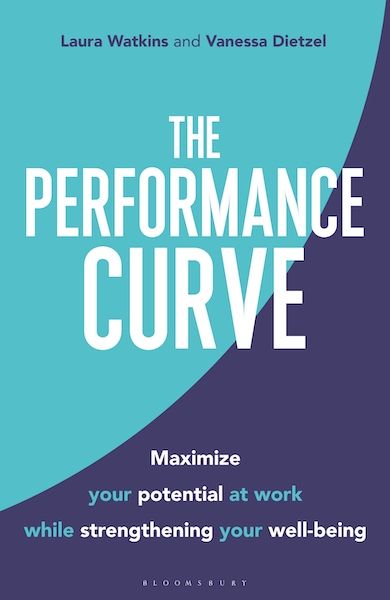Vanessa Dietzel, author of The Performance Curve, explains the effect purpose can have on our wellbeing, and how we can harness this power for our own good
From a really young age, my twin brother had a clear sense of his purpose in crafting unique experiences through technology such as lasers. Pursuing this purpose brought him such joy and satisfaction. By contrast, it’s taken me years to find my own sense of purpose. In my early twenties, I was excited to get a coveted job as a management consultant and there were many rewarding moments - but it didn’t compare to the consistent fulfilment that my brother had. I also missed having a sense of purpose to carry me through challenging periods in my life, including a burnout I faced after a few years as a consultant.
In the last few years, I’ve experienced how a sense of purpose (big or small) can be potent fuel for my well-being, especially on tough days when I need it most. It sustains me in living a much healthier, purpose-led life where I help others do the same. I make better choices and get the same sense of spirit and satisfaction that I had seen in my brother.
To tap into the power of purpose, we don’t need to be able to name a big life or ‘save the world’ purpose. It is enough to harness a deeper reason behind our decisions and actions, a North Star for doing, or not doing something. Here is why and how.
Why does purpose fuel our wellbeing?
Firstly, purpose increases motivation and helps our brain be in explore mode. In explore mode, our brain is firing on all cylinders to pursue opportunities and rewards. We do the complex work of reasoning, creating options, empathising, and thinking through decisions. We can bring more creativity and intuition to tackle difficult issues and collaborate better with others, all of which also increase our wellbeing.
Explore mode can be contrasted with protect mode, the flight-flight-or-freeze survival response. Protect mode is like an autopilot with a limited range of emergency functions. This mode keeps us safe when facing immediate physical danger, such as a tiger in the jungle, but it decreases activity in many parts of the executive centre of the brain. This reduces our ability to regulate our emotions, bring our best thinking to problems, and relate well with others, which can further erode the wellbeing and functioning of our bodies and minds.
We need to adapt our purpose to what feels achievable in a given situation, compassionately accept that this may not be what we’d like it to be and celebrate progress anyway.
Secondly, purpose focuses us on what matters. This acts as a filter for our actions and what we pay attention to, so it naturally helps us move in the desired direction, take note of our progress and feel more motivated. We then make a powerful shift in perspective from what we can’t do today or what is lacking, to what we can do or is enough. Focusing on what matters also helps us manage complexity and reduce overwhelm because it gives us a clear destination and compass to navigate with. Furthermore, deciding ourselves what matters helps us feel empowered: the ‘have to’ or ‘should’ is replaced with a ‘will’ or ‘want to’.
How can we harness the power of purpose?
1. Make the purpose real and achievable
How much fuel we get from a chosen purpose depends on how achievable it feels to us (even if it might take time and effort). By contrast, if our purpose feels unachievable, our motivation is dampened and we may even undermine ourselves by tipping into protect mode. That means we need to adapt our purpose to what feels achievable in a given situation, compassionately accept that this may not be what we’d like it to be and celebrate progress anyway.
I’ve just co-authored a book, The Performance Curve. On some writing days, I felt confident and the words flowed. Other times, I had to lower my sights and write the ‘worst possible first draft’ to then have something to improve on. I even had a few days when I struggled to get out of bed: in which case, my purpose became to breathe for a few minutes in a way that supported and soothed me. As an additional reward, I then pictured a crowd cheering me on as if I had just finished a marathon in my best time (which usually makes me smile).
Energy begets energy: our brain’s reward mechanisms kick in once we take some steps towards a purpose. Though my purpose, paradoxically, kept me in bed, it did eventually generate enough energy to get me out of bed. What is important here is to truly commit to the achievable purpose (breathing) and not keep an ulterior one (getting up) in the background – otherwise, you’re back where you started.
2. Find purpose anywhere
We can bring purpose to most things by connecting them to our sense of identity, values or passions. Take an activity you are struggling with – be it a piece of work, walking the dog or doing the dishes. What might you learn from it? How could you make it meaningful to you, or someone you care about? How could you combine it with something you like?
In case you’d like to have a more regular mindfulness practice, bring purpose to washing the dishes by being present to the sensations in your hands. If you really cannot muster any curiosity or motivation, then simply make that activity your purpose. Do it with complete abandon, as if it mattered most to you in your entire life. You will be surprised at the fuel this can generate.
3. Look for a purpose that is greater than yourself
This means not just greater than you individually, but also greater than your immediate circle of family and friends. Contributing to the overall health of the system – be that the economy, nature, or society – makes evolutionary sense, which may be why our brains are wired to experience helping others as rewarding in its own right.
This greater purpose is usually connected to our own life experiences, including (and often especially) the challenging ones. My burnout kept me off work for six months and that was a real wake-up call for me to change how I live and work. I came across so many things where I thought, ‘damn, we shouldn’t need to have a burnout to learn and benefit from this.’ That set me on a path to become a coach, breathwork therapist and yoga teacher.

The Performance Curve | Laura Watkins and Vanessa Dietzel
Two aspects to look out for when considering this greater sense of purpose. First, be aware of the trap of doing good while denying your own needs and wants. Over time, this can reduce your well-being. Fill your own cup and keep topping it up. Second, let it gradually evolve through paying attention to what lights you up. What brings you joy or satisfaction and makes you feel alive? What would you like to do more of? What is the impact of these activities on others or the wider world? What does that tell you about what you care about that is bigger than you?
The Performance Curve: Maximize Your Potential at Work while Strengthening Your Well-Being by Laura Watkins and Vanessa Dietzel is available now.
The Performance Curve is a holistic guide to both individual and collective performance in business, underpinned by neuroscience and psychological research.


Comments